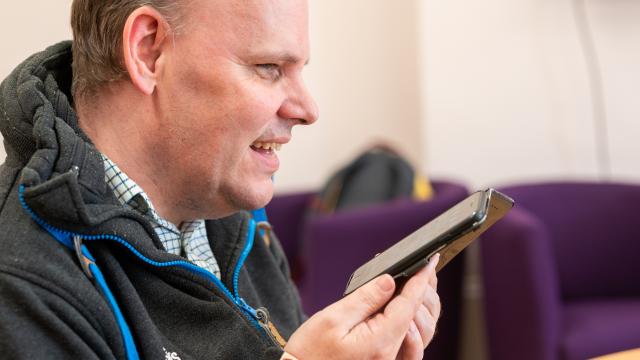
The importance of being accessible
Imagine being one of the 4.4 million people who are employed in the UK with a disability. How does this disability affect your work?
What are the barriers?
Whilst most people can probably imagine the challenges in our physical environment, such as steps, which might cause access problems, it’s much harder to imagine the other challenges we need to overcome if we have a learning disability, are autistic or have sight loss.
Not only would the physical environment impact our ability to work and engage with our colleagues, but so would the technology we’re provided with, how we’re able to interpret communications and potentially the work environment too. Instead of just one step to climb, it’s an entire staircase.
Without accessibility - and accessibility practices beyond the physical environment - it’s simply not possible to have an inclusive, equitable workplace. With this in mind, are employers doing their best to consider everyone’s needs to include, not just accommodate, their staff?
What accessibility features are there?
Accessibility features are everywhere. Be it enlarged text on a sign or a simplified layout on our phones, designers will always consider how to make their product easy to use and access. It is not a concept merely for people with disabilities – we all use accessibility features in our daily lives without even noticing.
However for people with learning disabilities, autistic people or those with sight loss, specific interventions in both the physical and virtual environments could be the difference between being able to work or not. Just like designers, inclusive employers should always carefully consider how their practices and workplaces can be accessed by all.
An inclusive employer will consider the needs of everyone in their workplace and offer solutions to ensure that each member of staff has the same ability to reach their goals as the others. Accessibility features and practices facilitate this, but the ultimate solution is for an employer to actively listen to the needs of their staff and then tailor solutions accordingly.
Key features that can be considered to aid accessibility within the workplace:
- Communications – are they written or broadcast in a way that's accessible? Can everyone in your community access, read and hear them? Do they work with text to speech software or do you have Easy Read versions?
- Software – do you have software and systems that have the latest accessibility features? Are people trained on how to write accessible documents and how to check them?
- Environment – are all spaces physically accessible? Do you have spaces that are welcoming to those with sensory differences? Are you able to provide support to help someone familiarise themselves with the environment or any procedures?
- Training – do you provide enough time and depth of training to suit multiple learning styles? Does everyone has an equal understanding of how something works?
It's easier than you think
This list may sound extensive - and costly - but it’s important to note that many accessible features are already freely available in software that all employers use on a daily basis. The solution could be as simple as spending a few hours learning how to use the features already available, in order to share this knowledge with others. For example, Microsoft Office is loaded with features to facilitate creation of accessible documents and to allow easy reading with an inbuilt screen reader.
Being accessible is the key to having a workforce that is productive and content. Employers that don’t consider accessibility will have a team that may struggle to reach their goals, which in turn will lead to frustrations and potentially even resignations, resulting in loss of talent and poor morale.
More importantly, making the ability to complete work easier is the right thing to do. One in five people in the UK has a disability and people with a learning disability, autistic people and those sight loss are up to four times as likely to be unemployed. If employers embrace equity, inclusion and accessibility, they can help ensure everyone has the same opportunity to reach their full potential and achieve their goals without limitations.
Get in touch
Ready, Willing and Able can help employers understand how to make their workplace more equitable, inclusive and accessible. To find out more, get in touch by emailing RWA@seeability.org.




